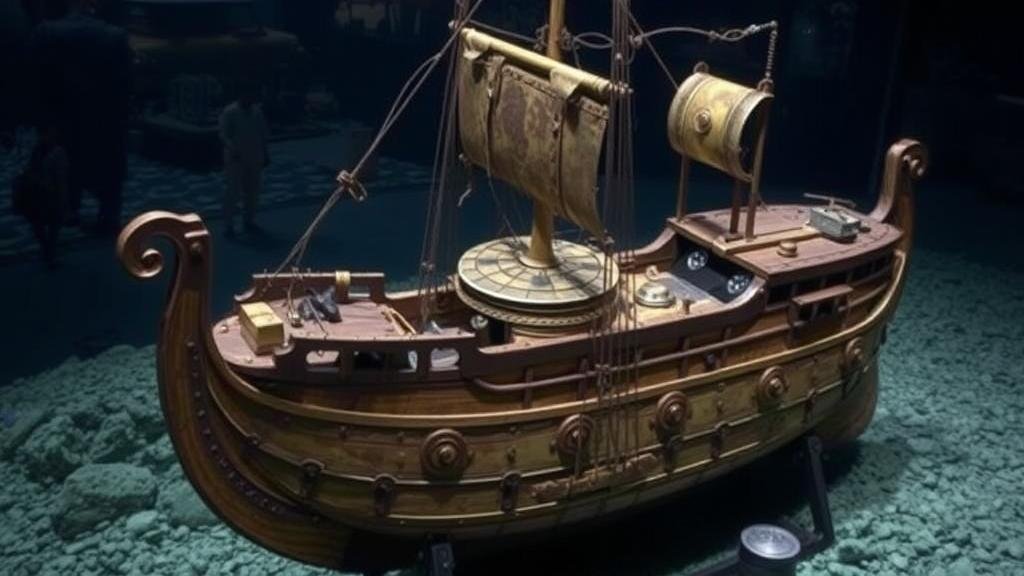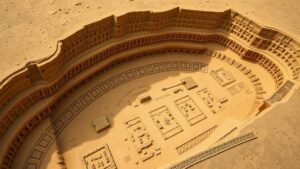Decoding the riddles of the Greek Antikythera shipwreck and its advanced artifacts.
Decoding the Riddles of the Greek Antikythera Shipwreck and Its Advanced Artifacts
The Antikythera shipwreck, discovered off the coast of the Greek island of Antikythera in 1900, is one of the most significant archaeological finds of the 20th century. This site revealed an array of artifacts that challenge our understanding of ancient technology and culture. Among these artifacts, the most intriguing is the Antikythera Mechanism, often regarded as the world’s first analog computer. This article delves into the history of the shipwreck, the advanced artifacts recovered, and their implications for our understanding of ancient civilizations.
The Discovery of the Antikythera Shipwreck
The wreck was discovered by sponge divers in 1900, and the subsequent excavations led by the Greek archaeologist Valerios Stais yielded a significant treasure trove of artifacts. Dated to around 70-60 BC, the ship is believed to have sunk while carrying cargo from the Eastern Mediterranean to Rome.
Among the recovered items were:
- Bronze statues
- Marble fragments
- Pottery
- Coins
The Antikythera Mechanism
The most remarkable artifact from the shipwreck is undoubtedly the Antikythera Mechanism. Initially thought to be a simple clock, it has since been acknowledged as a sophisticated astronomical device. mechanism consists of at least 30 different gears, enabling it to predict astronomical positions and eclipses for calendrical and astrological purposes.
According to studies published in Nature and other scientific journals, the mechanisms design indicates a deep understanding of celestial mechanics, showing similarities to later medieval devices but predating them by over a millennium. Some key features include:
- Planetary gear systems for tracking the movement of the Sun and Moon.
- A dial displaying the 19-year Metonic cycle, which was crucial for determining leap years.
- A mechanism to predict eclipses, based on the Saros cycle.
Technological Implications
The complexity of the Antikythera Mechanism suggests that ancient Greek technology was far more advanced than previously understood. Scholars argue that it represents a pinnacle of mechanical engineering in the ancient world. gears intricate arrangement and ancient inscriptions also provide insights into the mathematical knowledge of the time.
With modern imaging technologies, such as X-ray computed tomography and 3D scanning, researchers have been able to identify additional components and inscriptions that further clarify the devices function. For example, the study in 2021 revealed more than 3,000 letters inscribed on its surface, indicating its sophisticated design and usage.
Broader Historical Context
The artifacts recovered from the Antikythera shipwreck challenge our chronological understanding of technological advancement in ancient civilizations. The Greek Empire, known for its philosophy and art, also demonstrated remarkable engineering capabilities that contributed to fields such as astronomy and timekeeping.
By placing the Antikythera Mechanism within the broader context of Greek culture, one can observe a society that valued scientific inquiry and innovation. This is supported by the existence of other ancient devices, such as the astrolabe and the water clock. Each of these artifacts reflects a cumulative body of knowledge that emphasizes the importance of empirical observation and mathematical precision.
Modern Significance and Applications
Today, the study of the Antikythera shipwreck and its artifacts provides valuable lessons in both historical scholarship and modern technology. The insights gained from the Mechanism have implications for contemporary fields such as:
- Astronomy: Understanding ancient predictors of celestial bodies enhances current models.
- Engineering: The Mechanics inspire innovative gear systems in modern machinery.
- Education: It serves as a case study for the integration of history, science, and technology.
Conclusion
The Antikythera shipwreck stands as a monumental testament to ancient ingenuity. Through its extraordinary artifacts, particularly the Antikythera Mechanism, we gain invaluable insights into the technological capabilities of the ancient Greeks, reshaping our views on their contributions to science and engineering.
As researchers continue to decode the mysteries of this shipwreck, it becomes evident that the legacy of ancient civilizations offers not only historical insight but also inspiration for modern advancements in technology and beyond.



